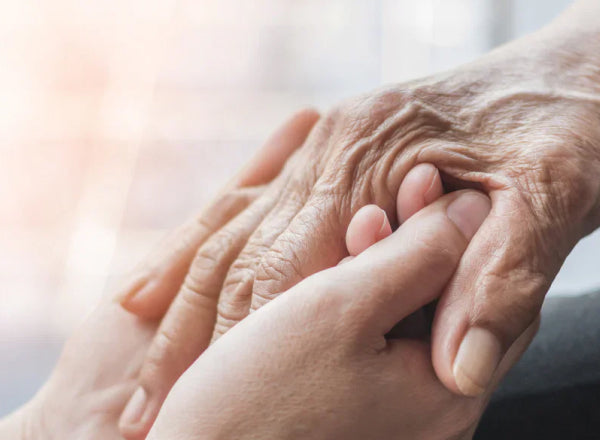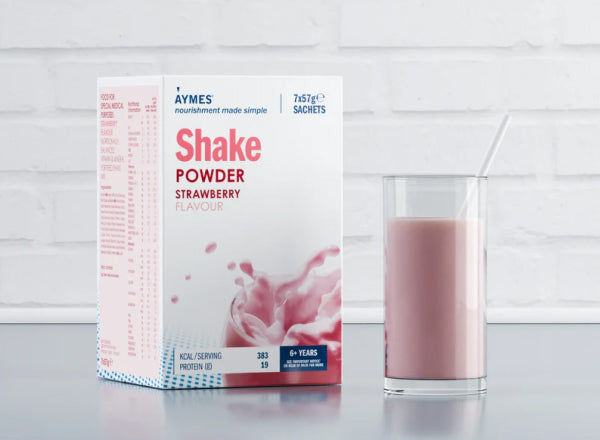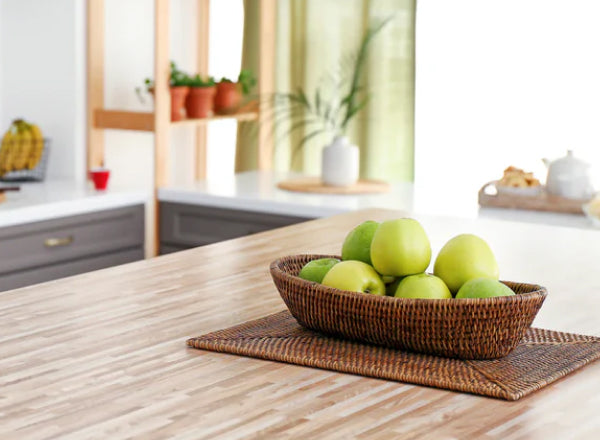
This article was co-written by Heather Russell, The Vegan Society Dietitian, and Claire James, Head of Nutrition
and Regulatory Affairs, AYMES.
Due to the recent explosion of alternative products, it’s never been easier to follow a vegan lifestyle. However, in 2020, vegans still face a range of challenges in relation to medical nutrition.
What is veganism?
This term was coined by the founders of The Vegan Society, which was established in 1944. The principles extend far beyond dietary choices. Veganism involves avoiding animal use as much as possible and practicable, affecting decisions about clothing, toiletries, entertainment and many other non-dietary matters.1
Vegan diets in the UK
Research suggests that the number of Brits eating vegan diets quadrupled between 2014 and 2019, reaching a total of around 600 000.2 Although the growth is being driven by younger people, around 11% are aged 55 and over3 and the number in UK care homes almost trebled between 2014 and 2019.4
How can we help?
As professionals, we have a responsibility to avoid discrimination on the grounds of veganism, which is a philosophical belief protected by human rights and quality law.5 Effectively meeting vegan needs requires a person-centred approach, negotiating any issues with sensitivity.
Managing undernutrition can be difficult for anyone. Many vegans must overcome the added challenges of nutrition support systems geared towards people who consume animal products. Vegans can be effective advocates through looking after their health, bearing in mind that the definition of veganism recognises that there is sometimes no alternative to animal use. However, they also need professionals and organisations to address systemic barriers to avoiding animal use.
In a recent consensus statement about treating vegan patients with eating disorders, it was highlighted that clinicians are unable to prescribe sip feeds, enteral feeds or vitamin and mineral supplements that are suitable for vegans. The British Dietetic Association and Royal College of Psychiatrists have called on industry to develop products that would help clinicians to address care inequalities.6
Suitability of current medical nutrition products
Until recently there has been a lack of suitable Advisory Committee on Borderline Substances (ACBS) approved Foods for Special Medical Purposes (FSMPs) available to vegan patients. Historically the majority of FSMPs for the management of disease-related malnutrition have been based on milk or milk proteins. Unsurprisingly, this is because milk is a widely available ingredient, milk protein has a high biological value and historically many clinical nutrition companies were borne out of the dairy industry who had a ready supply of the main ingredient.
With protein being very much on the medical nutrition agenda, protein supplements based on collagen have recently become available for both tube and oral feeding. Indeed, collagen is also used as an ingredient in some oral nutritional supplements alongside milk protein. Although collagen has the advantage of being a thin liquid, making it easy to take/administer, as it is derived from animal or fish bones/by-products it is far from suitable for a vegan patient.
Other ingredients are problematic for vegans too, for instance vitamin D3 is often sourced from lanolin in sheep’s wool. Vitamin carriers and processing aids need to be considered along with production methods during the manufacturing of the ingredients and final product. An overview of some of the animal derived ingredients that are commonly used in FSMPs is shown in Table 1.
As it is not always obvious which ingredients may be problematic for a vegan diet from the ingredients list, it is often time consuming for the healthcare professional to gather the relevant information (manufacturers usually need to be contacted directly) to help the patient make an informed choice. However, it has been shown that involving patients in prescribing decisions and listening to their views and preferences is associated with improved adherence to prescribed medicines,7 so the same may well be true for compliance to FSMPs.
Vegan Trademark process
The Vegan Society introduced the Vegan Trademark in 1990 to combat the lack of clarity in vegan product labelling. Today, it has over 40,000 unique products registered against its standards, which ensure no animal ingredients and no animal testing has been involved in the production of that product.8
Attaining Vegan Trademark registration is straight-forward. The Vegan Society’s team of expert Officers carry out a unique, in-depth audit of the company’s supply chain, ensuring that products and their ingredients meet the Vegan Trademark standards. Companies simply apply directly to the Society to initiate the process, declaring their product’s ingredients, and providing any additional information requested about manufacturing.
Once registered with the Vegan Trademark, companies can apply this well-recognised and trusted logo to their packaging, website, and any promotional materials. It provides consumers with the reassurance to easily source and choose products that meet their lifestyle needs.
Vegan standards versus allergy standards
It’s important to be clear about the differences between these standards. The Vegan Society doesn’t claim that products registered with the Vegan Trademark are suitable for people with allergies to animal products; this depends on the standards achieved by individual manufacturers. The licence agreement asks companies to confirm that they strive to minimise cross-contamination from animal products as far as is reasonably practicable.9 Therefore, vegan products may carry warnings about animal allergens.
Challenges for industry
There has been significant innovation in the plant-based and vegan food categories over recent years along with greater awareness of veganism as a way of life. Trends and innovations in consumer foods often have an influence on FSMPs, either through the use of new functional ingredients or packaging/product format innovation. The availability of more commercial plant-based protein sources provides greater choice for formulating oral nutritional supplements and tube feeds too.
Unsurprisingly, protein is a key consideration in formulating FSMPs for the management of disease-related malnutrition that are suitable for vegans. It is generally recognised that plant-based proteins have a lower amount of essential amino acids (26 ± 2% of total protein) when compared with animal- based proteins (37 ± 2% of total protein) so choosing the right plant-based protein source in FSMPs for the management of disease-related malnutrition is important.10 Comparing the amino acid content of plant-based proteins to the WHO/FAO/UNU essential amino acid requirements for adults11 shows that some plant-based proteins such as oat, lupin, wheat, hemp and microalgae, fall short, whereas others such as soy, brown rice, pea, corn and potato proteins meet the requirements. However, whilst providing a good quality plant-based protein source is important, this has to be balanced with palatability to help ensure good compliance.
Table 1: Commonly used Animal Derived Ingredients in FSMPs for the Management of Disease-related Malnutrition.
| Ingredient | Source | Use |
| Milk, milk protein, whey, caseins and their derivatives | Cows’ milk | The main protein source of the majority of tube feeds and oral nutritional supplements |
| Collagen | Bovine, porcine or fish bones/ by-products | As a protein source in some oral nutritional supplements and protein supplements |
| Cochineal/carmine | Red dye made from crushed insects | Gives the red colour to strawberry and berry flavoured oral nutritional supplements |
| Lactose | From milk | Often present in small amounts from milk. Used as an ingredient in infant formulas and may be present in some flavourings |
| Vitamin D3 | Lanolin from sheepskin/wool | As the source of cholecalciferol in tube feeds and oral nutritional supplements |
| Fish oil | Derived from marine fish | Used as a source of omega-3 fatty acids in some tube feeds and oral nutritional supplements |
| Gelatin (may not be labelled in ingredients) | From the skin and bone of cattle, pigs or fish | May be used as a carrier for some vitamins used in tube feeds and oral nutritional supplements |
Figure 1 shows the percentage of essential amino acid content of a range of plant-based proteins compared to whey protein.

The optimal type of plant-based protein for a product that is used as a sole source of nutrition is likely to require a blend of proteins to ensure all the essential amino acids are present in the right amounts. Further research is also needed to identify the amount and source of plant-based proteins that could provide sufficient essential amino acids to allow a robust postprandial stimulation of muscle protein synthesis and muscle maintenance in malnourished people, as this is one of the desired outcomes of providing nutritional support in this patient group.
For micronutrients, alternative sources of vitamin D are available. The EU regulations allow vitamin D to be sourced from either cholecalciferol (vitamin D3) or ergocalciferol (vitamin D2), the latter being available in a synthetic form which is not animal derived12 and requires the body to convert it into the active form vitamin D3. Lichen-based vitamin D3 is also available as an alternative.
Whilst fish oil has been the main commercial source of omega-3 fatty acids, such as eicosapentaenoic (EPA) and docosahexaenoic acid (DHA), plant-based alternatives produced by marine algae are also commercially available and are used in some infant formulas. Other animal derived ingredients used to impart colour, such as carmine or cochineal, can be replaced by plant-based colours such as beetroot red or lycopene. Table 2 summarises some of the non-animal derived ingredients that can be used as alternatives in FSMPs.
Table 2: Plant-based Ingredient Alternatives for FSMPs for the Management of Disease-related Malnutrition
| Nutrient/ingredient | Non animal alternative |
| Protein | Plant-based proteins, e.g. soy, pea, brown rice, corn, either on their own or as a blend. Plant-based protein hydrolysates are also available |
| Lactose | Glucose, glucose syrups derived from plant sources, such as corn, rice |
| Vitamin D | Ergocalciferol (vitamin D2), lichen-based vitamin D3 |
| Fish oil/omega-3 fats (DHA/EPA) | Marine algae sources of EPA and DHA |
| Carmine/cochineal | Plant-based colours e.g. beetroot red, lycopene |
Choosing the right plant-based ingredient is a starting point but each ingredient has to be checked to ensure it hasn’t involved the use of animals or animal derived ingredients during its production and processing. This involves a complete audit of the supply chain. Working with the Trademarking team from the Vegan Society ensures the right questions are asked, documented evidence obtained, and reassurance provided to the customer/patient, at the same time eliminating time and effort on behalf of the healthcare professional.
Conclusion
The Vegan Society and AYMES have been delighted to work together to make nutritionally balanced vegan medical nutrition a reality in 2020, which is a huge step forward for vulnerable vegans. Joint working has been an invaluable part of the process with both organisations benefiting from the learning opportunities provided by a unique collaboration. We anticipate further product developments as innovations in the commercial sector transfer over to the medical nutrition category.
















